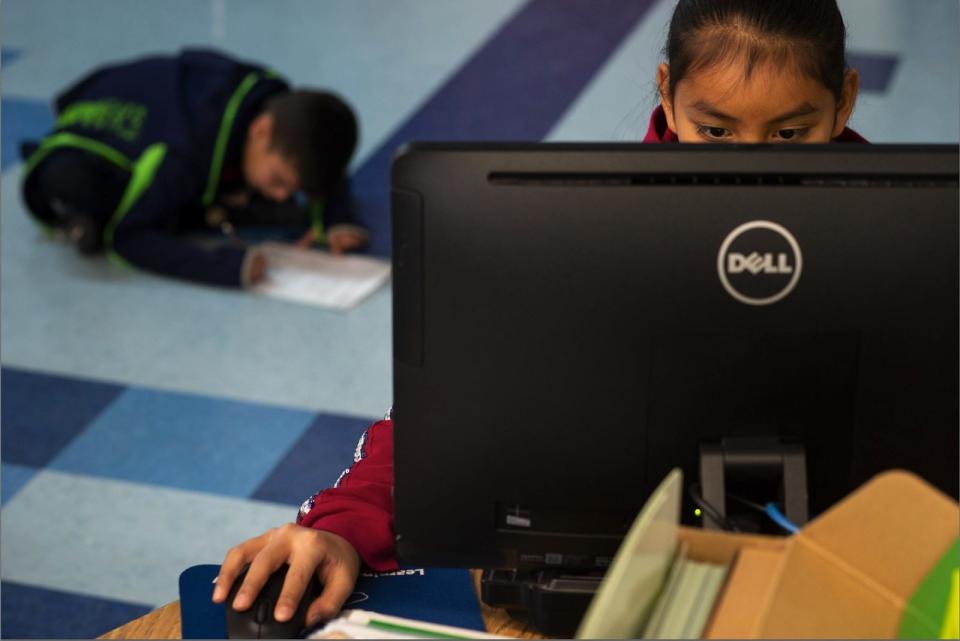Arizona schools can't ignore AI. This is how they use it responsibly
Remember the 1990s Nokia mobile phones?
We all walked around with black bricks held to our ears, tiny antennas raised like miniature flag poles above our heads.
In a decade or two, I believe we will feel as nostalgic about ChatGPT as we do about those obsolete Nokia phones.
Like cellphones and the internet, artificial intelligence is fundamentally reshaping the way we explore, interact and communicate with the world.
AI is quickly weaving its way into our social, economic and educational constructs.
AI is already altering the work world
AI-driven chatbots and virtual assistants are driving online interactions. Social media algorithms determine what content is delivered in our feed based upon our interests and search history, shaping our online experiences.
The World Economic Forum’s latest jobs report indicates that more than 75% of companies plan to implement AI technology by 2027, increasing efficiency and streamlining processes while also creating entire new job sectors and desirable skill sets.
AI health care aides are now used to better personalize care, diagnose disease and increase accessibility. Even pharmacies use virtual assistants to help when managing prescriptions online, freeing up pharmacists to focus on in-person care.
While industry is quickly adopting artificial intelligence, wrestling with its benefits and ethical dilemmas, only a handful of states have issued guidance on using AI in K-12 settings.
Arizona isn’t one of them.
Schools need to use AI, but how?

Enter Northern Arizona University’s Arizona Institute for Education and the Economy (AIEE), releasing “Generative Artificial Intelligence in K-12 Education” on May 13, and hosting a webinar for educators on May 15.
The guidance comes with support from the Arizona Department of Education and several statewide education and EdTech organizations and associations.
“We aren’t the AI Institute,” laughs Dr. Chad Getson, former superintendent of Phoenix Union High School District and AIEE’s founding executive director, “but we do sit at the intersection of PreK-12, higher education, and workforce development.
“We exist to fundamentally transform school systems. AI must be a part of the solutions-oriented work we do. It is critical for systems of teaching and learning, and how we prepare children for the future economy as they graduate into careers where AI is already in the fabric of the workforce.”
Is AI a threat? Why there is reason to worry
Public K-12 schools are grappling with the role AI can and should play in student learning. They are eager for a north star, offering clear guidance and strategies for implementation.
The institute’s publication brings together the work of more than 20 Arizona-based and national researchers and reviewers, presenting comprehensive content and guidance for Arizona’s educators.
AI could fundamentally change education
“Yes, AI makes teachers’ lives easier when it comes to lesson planning and grading,” explains Dr. LeeAnn Lindsey, Director of EdTech and Innovation for the Institute, “but that isn’t the point. The kind of lessons we put in front of children needs to fundamentally change so they are prepared to live and interact in a world that is increasingly powered by AI.
“Generative artificial intelligence has the potential to change the dynamics of education, providing more agency for students, putting them in control of their learning,” Lindsey continues.
“Historically, teachers have been the holders of knowledge, passing it down to students. AI can shift that role, so that teachers can better personalize learning for each student, serving more as a coach and facilitator.”
The use of AI in K-12 education is here.
With it comes ethical dilemmas about academic integrity, requiring educators to sort through issues of what constitutes cheating, how to cite AI in academic papers, and a host of other questions.
Important questions.
Like cellphones and the internet, however, AI offers benefits that demand educators rise to the occasion and find the answers, adopting clear guidelines and expectations, then communicating them with students and stakeholders within our schools.
The bottom line is that we can either be in control of how we want AI to shape our schools and educational systems, or AI will happen to us, not with us.
Rhonda Cagle is founder of Leverage Consulting Agency, serving educational and non-profit agencies. She is a member of the Board of Contributors for The Arizona Republic. Follow her on X (formerly Twitter): @RhondaCagle1.
This article originally appeared on Arizona Republic: AI is changing how schools teach. They need guidance to do it wisely

